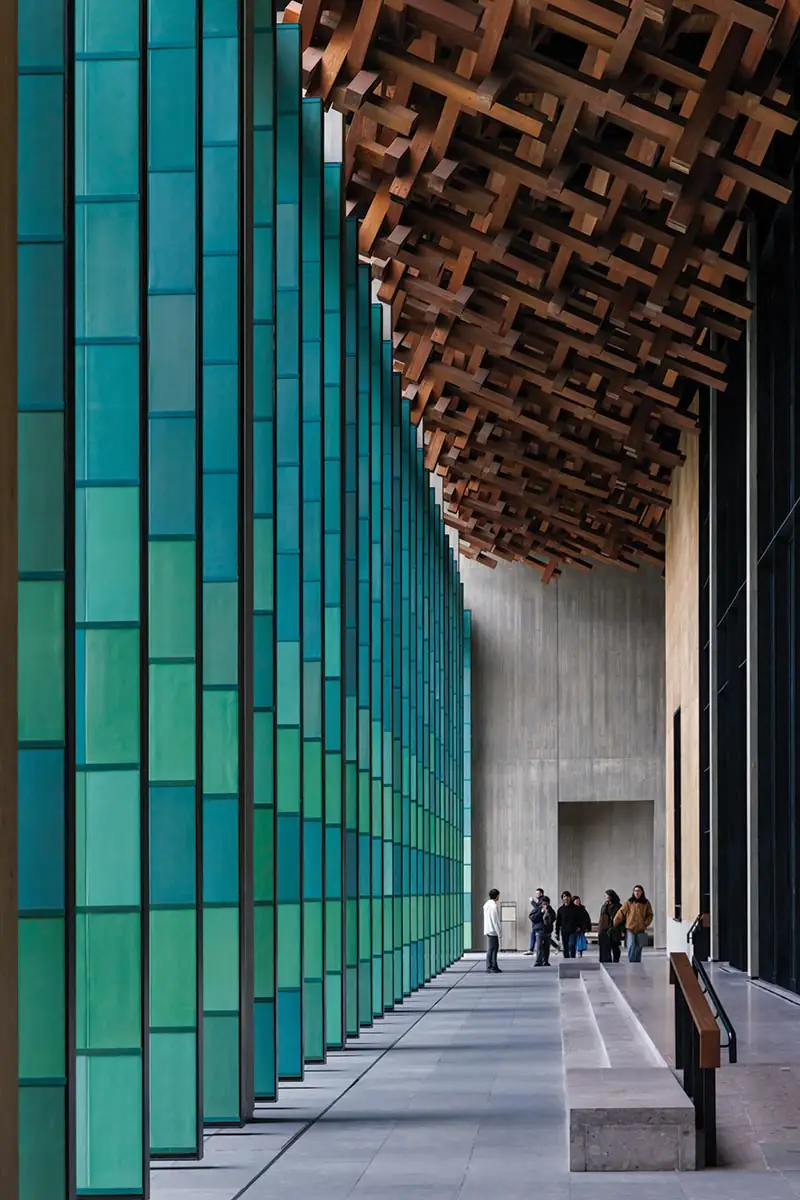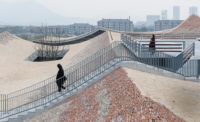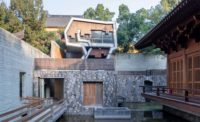China has no shortage of history; with more than 4,000 recorded years of it, the country is considered the oldest living civilization in the world. That comes with its own set of quandaries, such as how to collect, preserve, and curate countless artifacts, from ancient books and manuscripts to stamps. In 2022, the Chinese government responded to the challenge by inaugurating the National Archives of Publications and Culture as a repository of that heritage, with a headquarters in Beijing and three satellite campuses dispersed throughout the country. One is in Liangzhu—a UNESCO World Heritage Site on the outskirts of Hangzhou—and, designed by the city’s own Amateur Architecture Studio, skillfully draws from the region’s artistic and architectural vernacular with pagoda-like structures, complex woodwork, and, most conspicuously, thousands of celadon ceramic facade tiles.
The campus is gargantuan, covering approximately 1.1 million square feet, and includes 13 pavilions, each of which houses a different program, such as exhibition halls and libraries, with the archives partly buried in the adjacent mountainside. The rough topography becomes an integral aspect of the project’s shan shui—a term from Chinese landscape painting meaning “mountains and water,” in which vertical and horizontal elements are balanced.

Celadon-clad screen walls line the campus’s arcades, and they can be rotated and moved. Photo © Iwan Baan, click to enlarge.
Celadon pottery has been produced in the city of Longquan, in the southwest corner of Zhejiang province—of which Hangzhou is the capital—since the Song dynasty about a millennium ago. Amateur Architecture Studio, led by Pritzker Prize–winner Wang Shu with Lu Wenyu, has experimented in the use of that fired and glazed clay as a cladding material twice before—the Ceramic House in Jinhau (2006) and Tea House at Linyin Buddhist Temple (2020)—but those projects are dwarfed in scale by the practice’s comprehensive undertaking in Liangzhu.
Here the firm developed a detailed set of drawings specifying the tiles’ dimensions, acceptable shades of green, and placement across the campus’s many buildings, specifications used by three celadon manufacturers, each with their own secret glaze recipes, to produce an array of samples that were carefully scrutinized. The process was a complex affair, and, after several full-scale mock-ups were built, the design team moved forward with 12 specific glaze types.
All in all, some 100,000 square feet of ceramic tiles clad the buildings—the bulk of which are used for the arcade screen walls that encircle the campus’s larger buildings. The tiles, which measure 1 foot by 2½ feet by 5/16 inches, are held in place by oxidized copper surface fasteners that tie back to a nearly 35-foot-tall uniform steel skeleton. This straightforward system sped up construction and installation, and allows for convenient replacement should any tiles be damaged. The skeletal frames are also mounted on either side of steel beams, and can rotate and open with the help of motors to reveal the surrounding landscape, bringing the outdoors in.
This contemporary interpretation of the region’s vernacular design extends to other materials and methods as well. Notably, the design team supervised live demonstrations of rammed-earth construction techniques for the project’s contractor, and the lessons gleaned were then scaled up to carve out program within the larger concrete superstructures. In the campus’s larger halls, intricate wood-and-steel canopies hearken back to traditional carpentry, though with monumental spans—the largest of which is nearly 330 feet wide. The Song dynasty may be long past, but its craftspeople would surely appreciate the complex and modern application of the traditional ceramic material for this cultural reliquary.
Click drawings to enlarge






Post a comment to this article
Report Abusive Comment